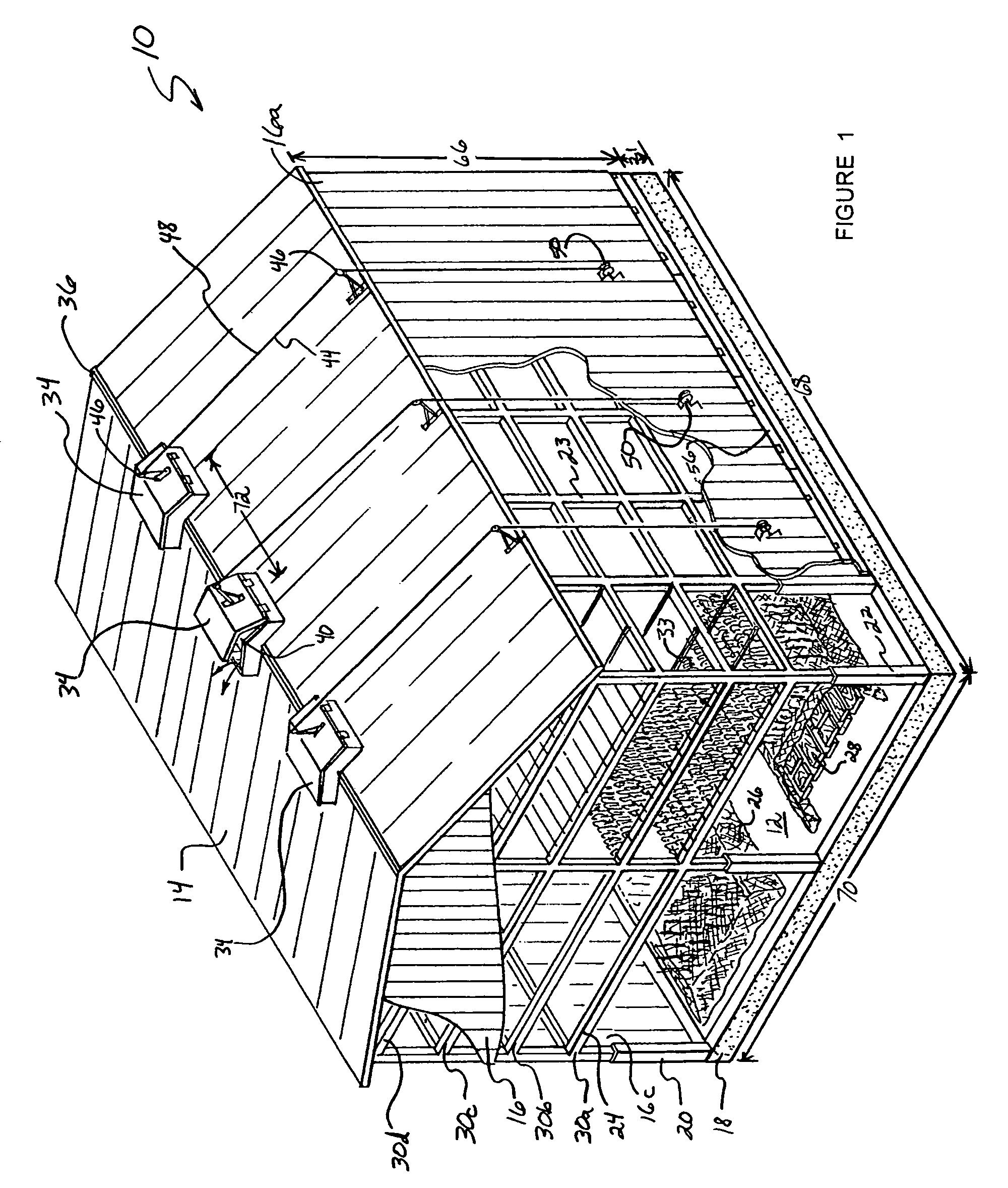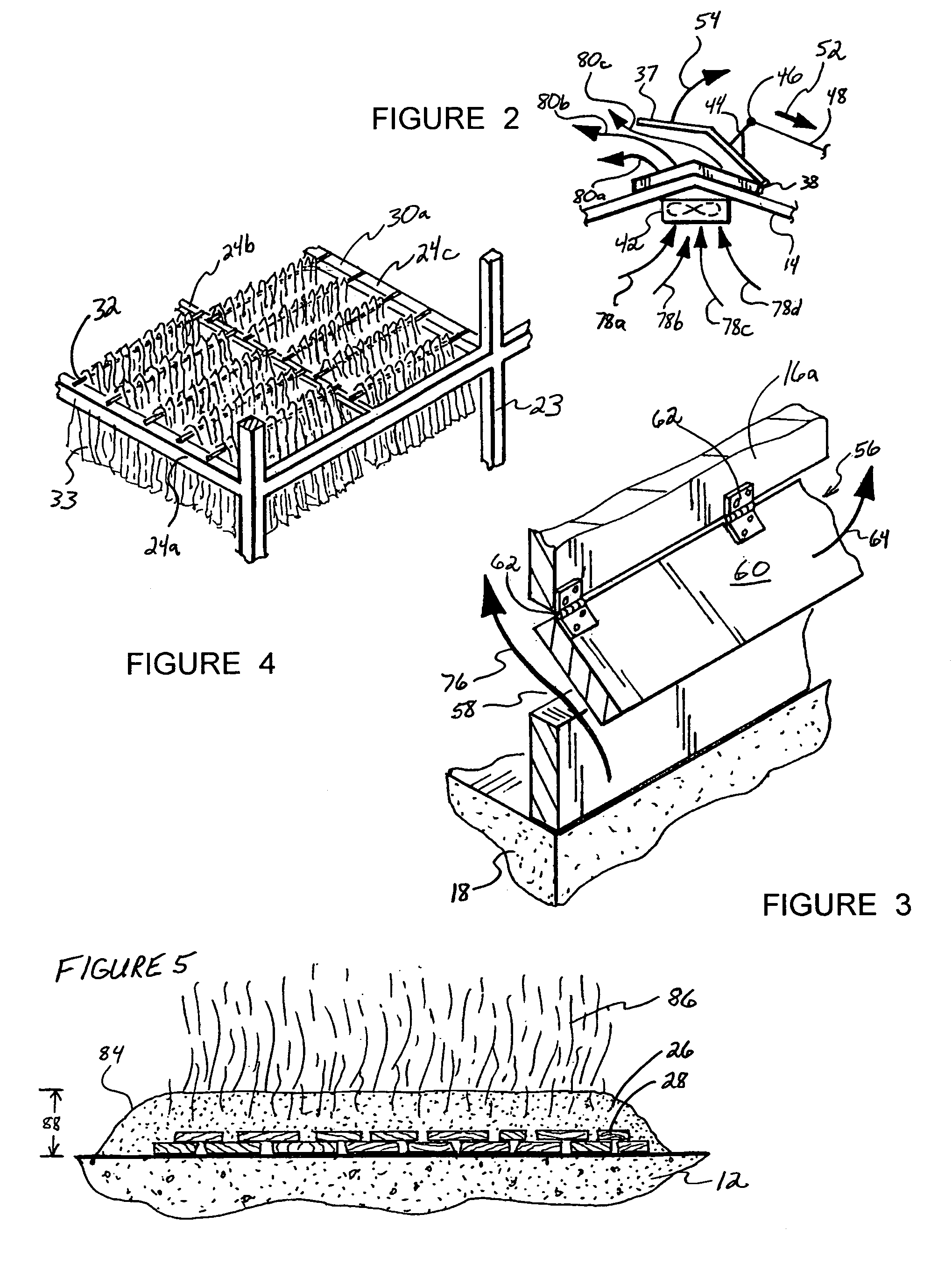Tobacco precursor product
a precursor product and tobacco technology, applied in the field of tobacco products, can solve the problems of reducing nitrate to nitrite, green tobacco is generally unsuitable for smoking and/or use the efforts have not proved beneficial in smokeless tobacco products, so as to hinder the activity of nitrate reductase, and hinder the formation of tsnas.
- Summary
- Abstract
- Description
- Claims
- Application Information
AI Technical Summary
Benefits of technology
Problems solved by technology
Method used
Image
Examples
Embodiment Construction
[0066]The following examples show test results under a variety of conditions. Reference to the curing barn 10 or a curing facility similar to the curing barn 10 may be made in the discussion of these results to facilitate understanding of the procedures that coincide with the particular test results. It should, however, be noted that these results may be achieved by employing curing processes of the invention in any of a number of other appropriate curing structures.
[0067]With regard to a first curing process, dark fire tobacco (more particularly, Narrow Leaf Madole tobacco) was harvested and, about two days later, housed in a curing barn. The curing barn used in this first curing process had a length (e.g., 68) of about 40 feet and a width (e.g., 70) of about 30 feet. Further, the curing barn had four tiers (e.g., 30a-d), and the tobacco inside the barn was divided into twenty samples of about two or three leaves. Incidentally, each of these samples included tobacco from each of th...
PUM
 Login to View More
Login to View More Abstract
Description
Claims
Application Information
 Login to View More
Login to View More - R&D
- Intellectual Property
- Life Sciences
- Materials
- Tech Scout
- Unparalleled Data Quality
- Higher Quality Content
- 60% Fewer Hallucinations
Browse by: Latest US Patents, China's latest patents, Technical Efficacy Thesaurus, Application Domain, Technology Topic, Popular Technical Reports.
© 2025 PatSnap. All rights reserved.Legal|Privacy policy|Modern Slavery Act Transparency Statement|Sitemap|About US| Contact US: help@patsnap.com



